Together Outspoken, Bonds Unbroken
by BeNjamyn Upshaw-Ruffner
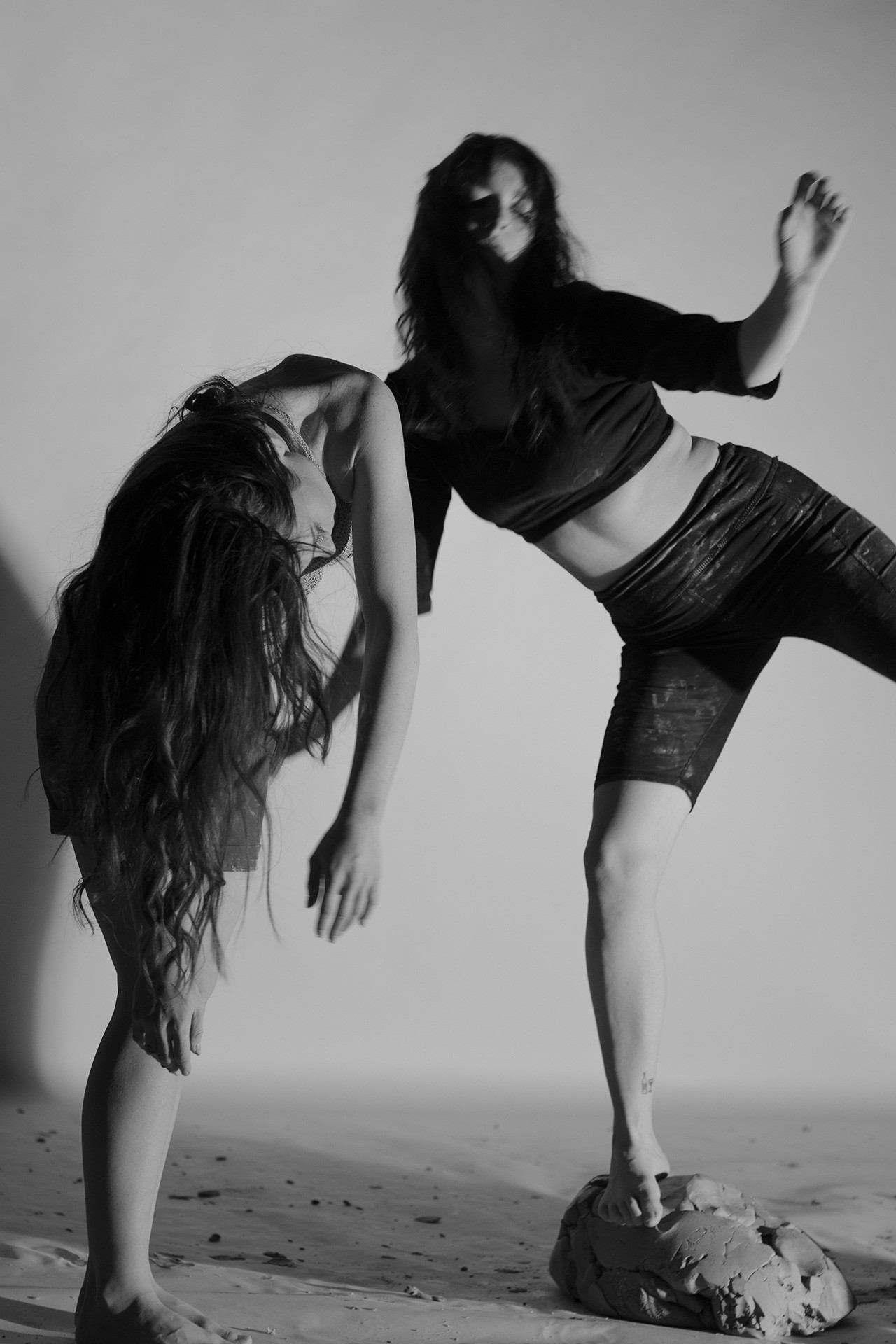 Bashir Al Mahayni, KAOBAB
Bashir Al Mahayni, KAOBAB
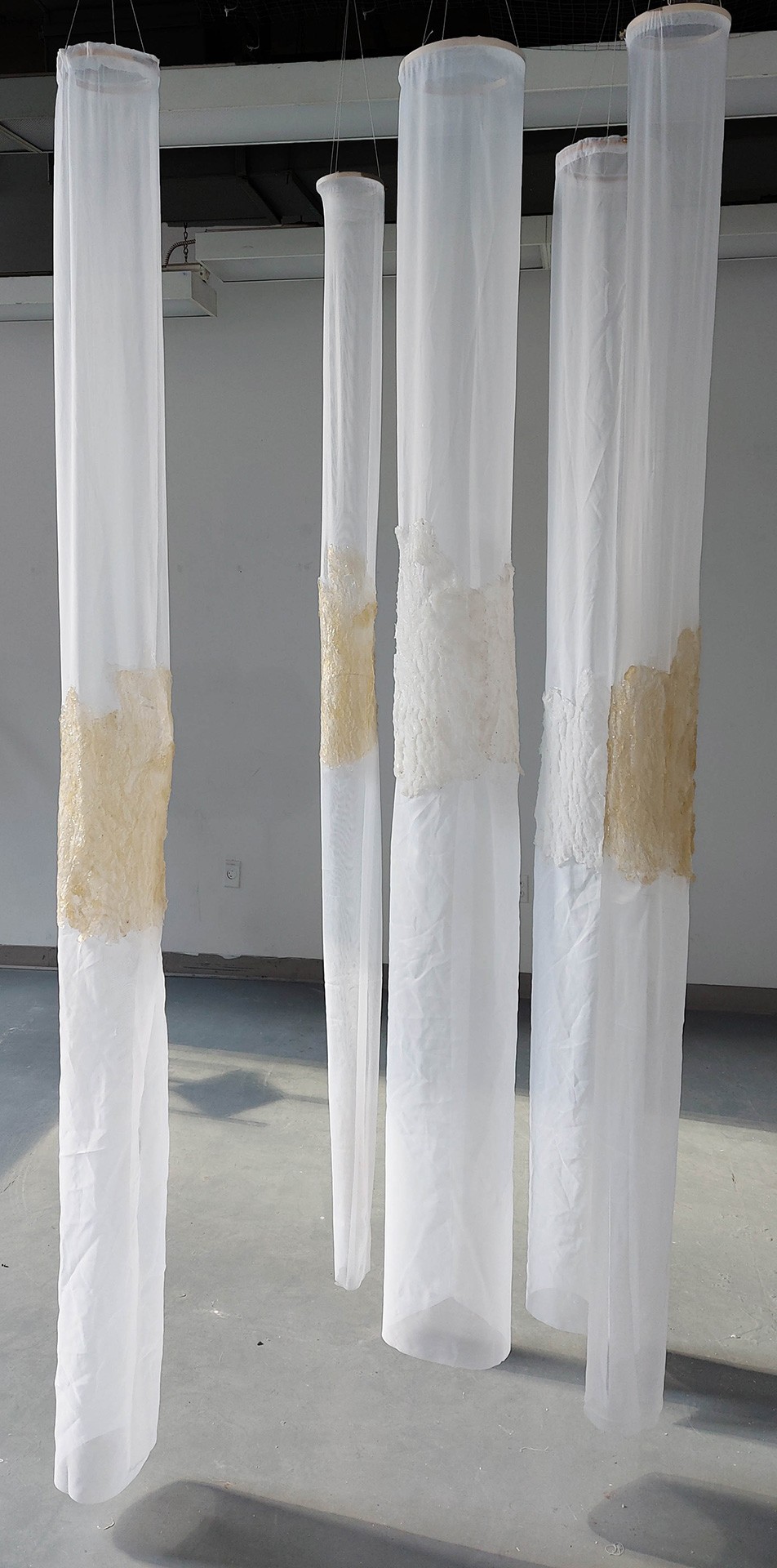 Isabelle Anguita, TRACE DE FORÊT
Isabelle Anguita, TRACE DE FORÊT
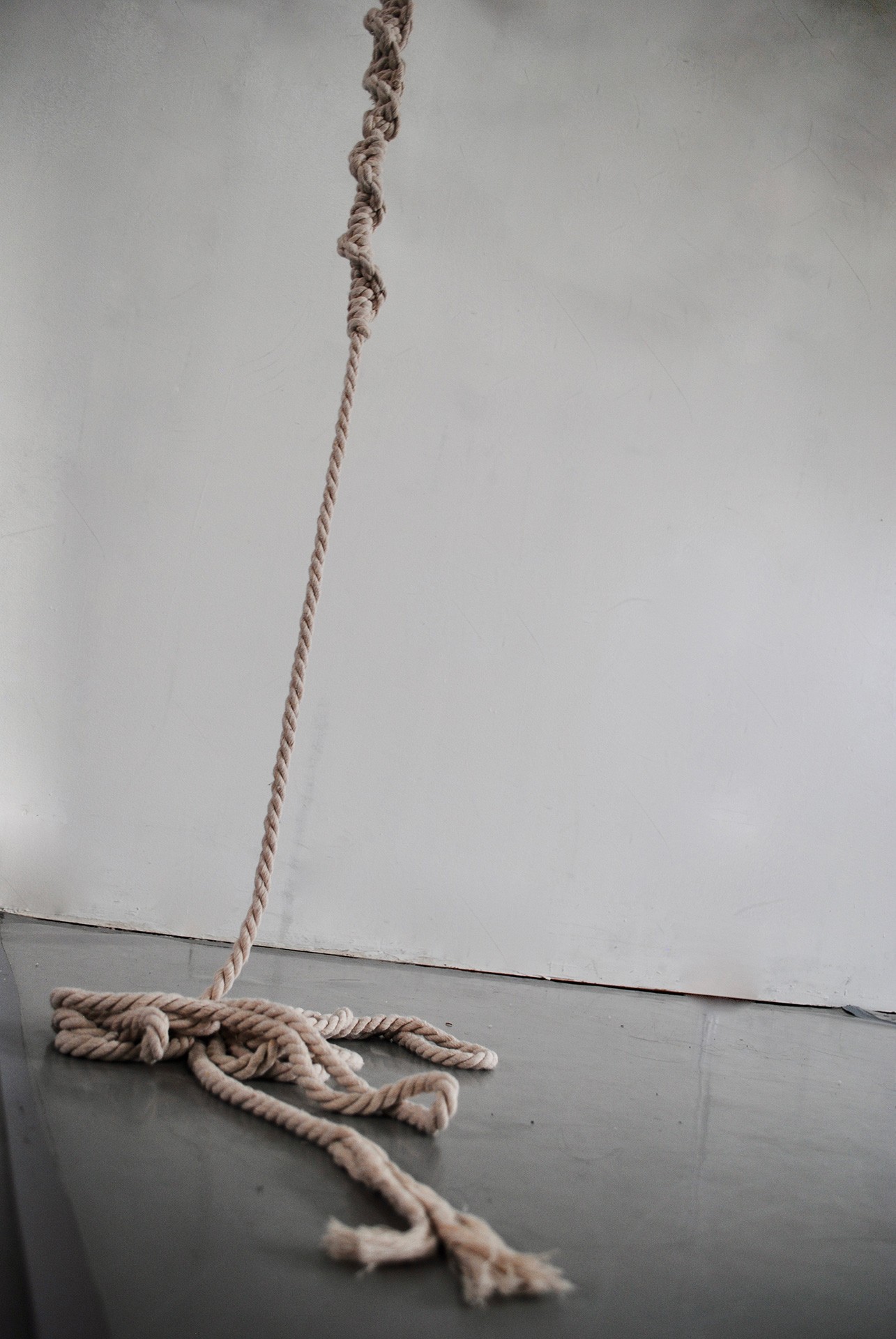 Amara Barner, TO WHOM IT MAY CONCERN
Amara Barner, TO WHOM IT MAY CONCERN
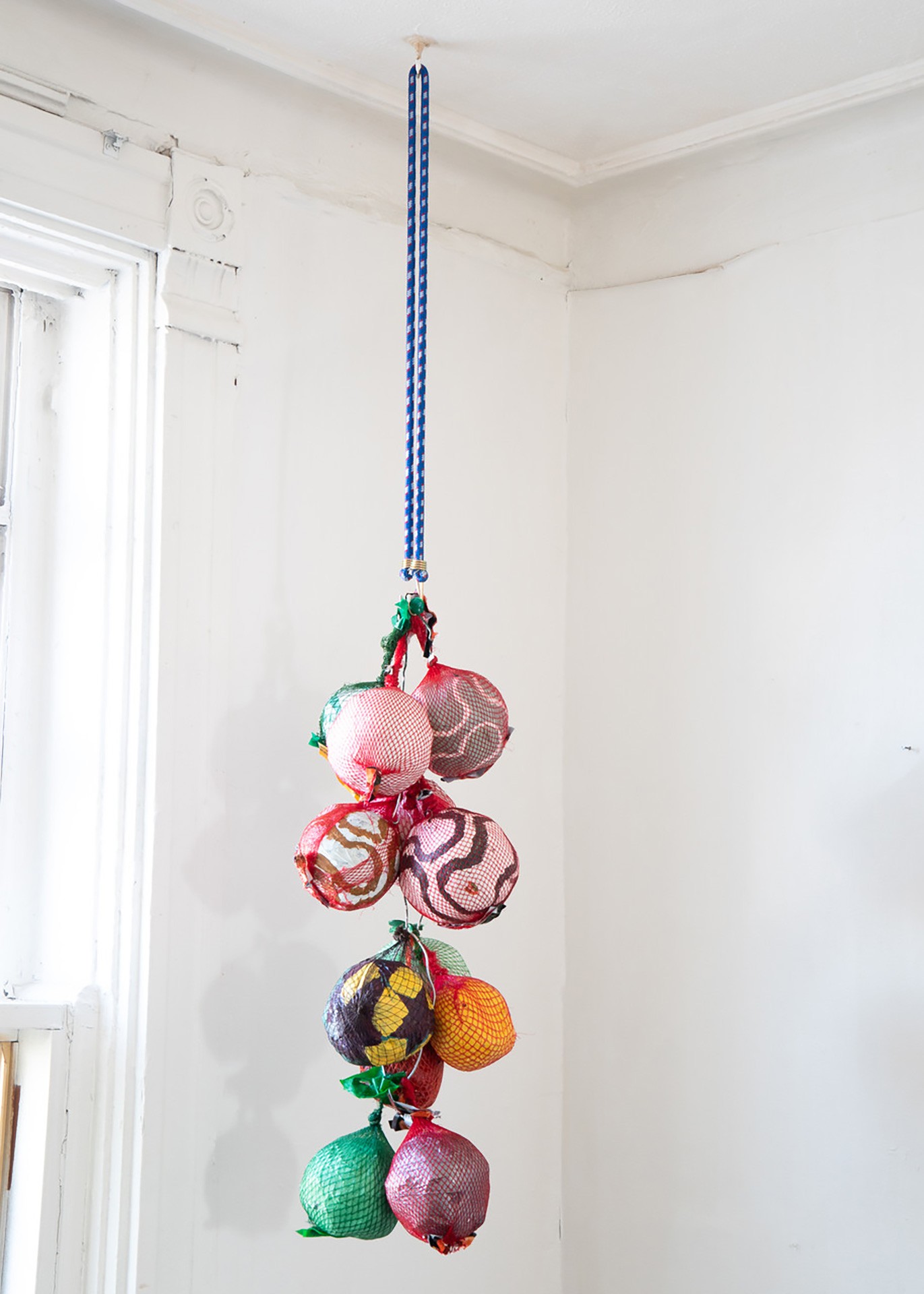 Juan Pablo Hernández Gutiérrez, BOLA E' TRAPO
Juan Pablo Hernández Gutiérrez, BOLA E' TRAPO
Through the work of Bashir Al Mahayni, Isabelle Anguita, Amara Barner, and Juan Pablo Hernández Gutiérrez, this essay will explore themes of intersubjectivity, humanity, community, and resistance. As I dive into this short analysis, I hope to facilitate a deeper appreciation for their artworks.
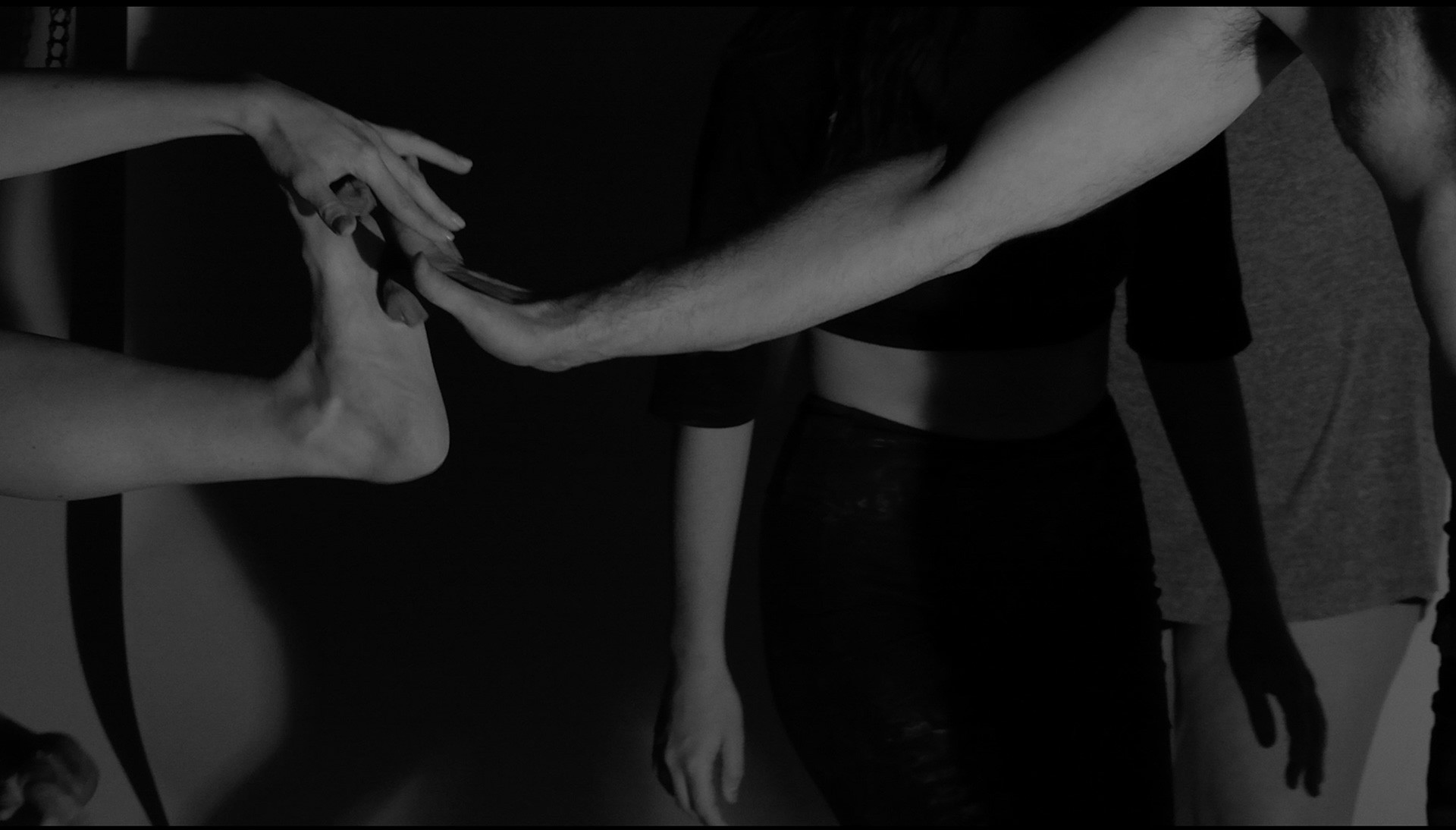 Bashir Al Mahayni, KAOBAB
Bashir Al Mahayni, KAOBAB
In the Black Box, one can experience Bashir Al Mahayni’s video installation titled Kaokab. Using clay as a visual metaphor for embodied experiences, this contemporary dance piece investigates the material space inhabited by human beings. Clay is the foundation of the improvisational nature of the work; left at the disposal of the dancers, the clay takes many forms, and contorts like the dancers’ bodies. Clay’s versatility is echoed in the fluidity of the term Kaokab, which in Arabic has a variety of meanings: a planet, bulk, a mountain, adversity, a group of people, a child, or being part of a cycle. However, and most importantly, a common definition is clay.1
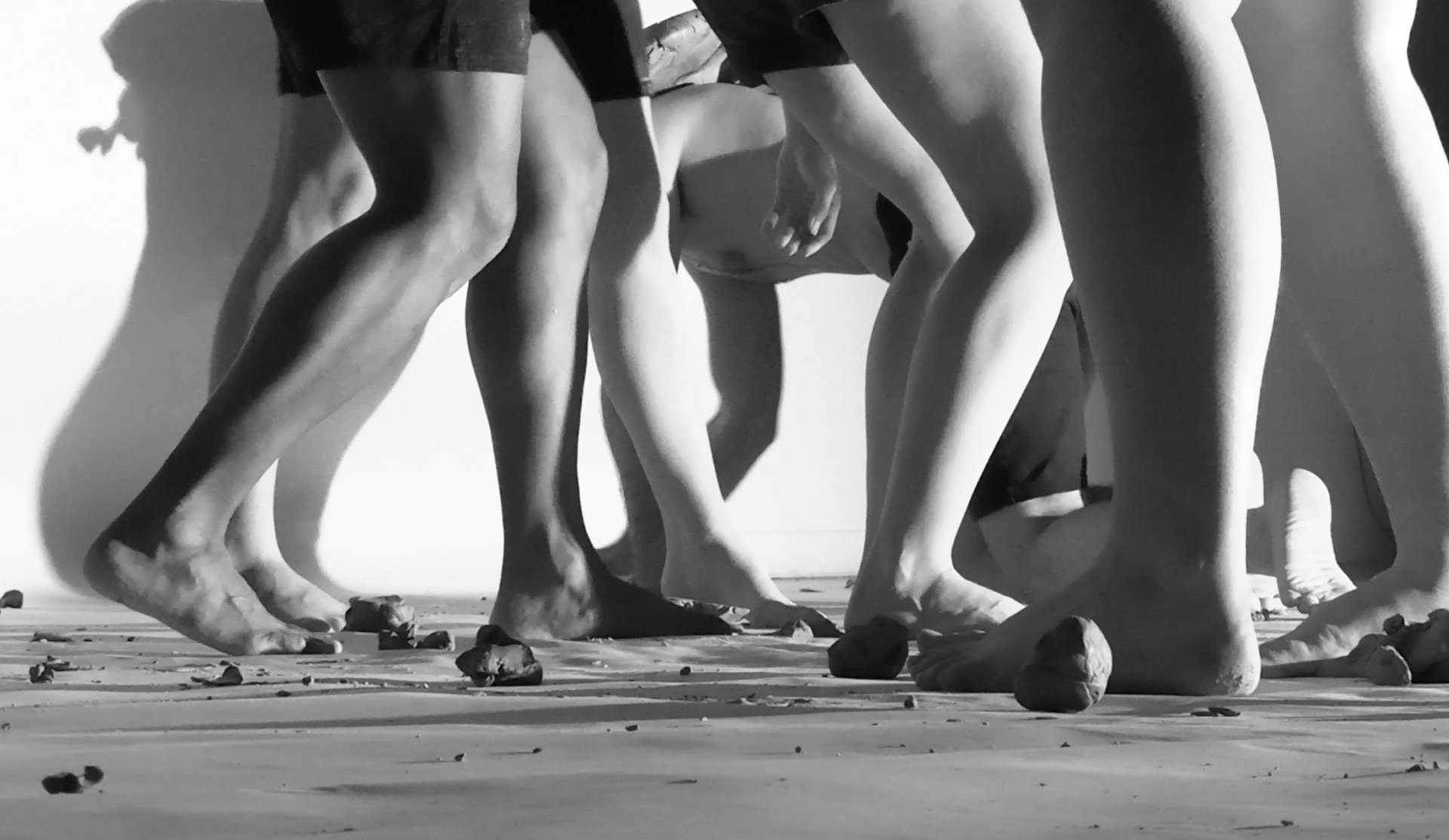 Bashir Al Mahayni, KAOBAB
Bashir Al Mahayni, KAOBAB
How might these definitions inform our understanding of the work? Al Mahayni, a dance student himself, has recruited fellow Concordia dance students to intuitively engage with a fresh block of clay. The audience watches dancers coalescing to create a space where connection and reciprocity are encouraged. We can interpret the image of a mountain through the forming and reforming of the clay. The bodies interact with the clay, which is quickly reshaped, much like tectonic plates shape the mountains over millions of years; this improvisational sculpting of a “mountainous” clay landscape gives the piece its visual language. But we can also interpret these clay “mountains” conceptually, as a challenge for a community to overcome. This is just one example of how the work is flexible in its semiotic process. Viewers are therefore treated to a visual articulation of versatility, both physical and linguistic. As a result, the audience may proverbially shape and reshape their own interpretations, just as the dancers are shaping and reshaping the clay.
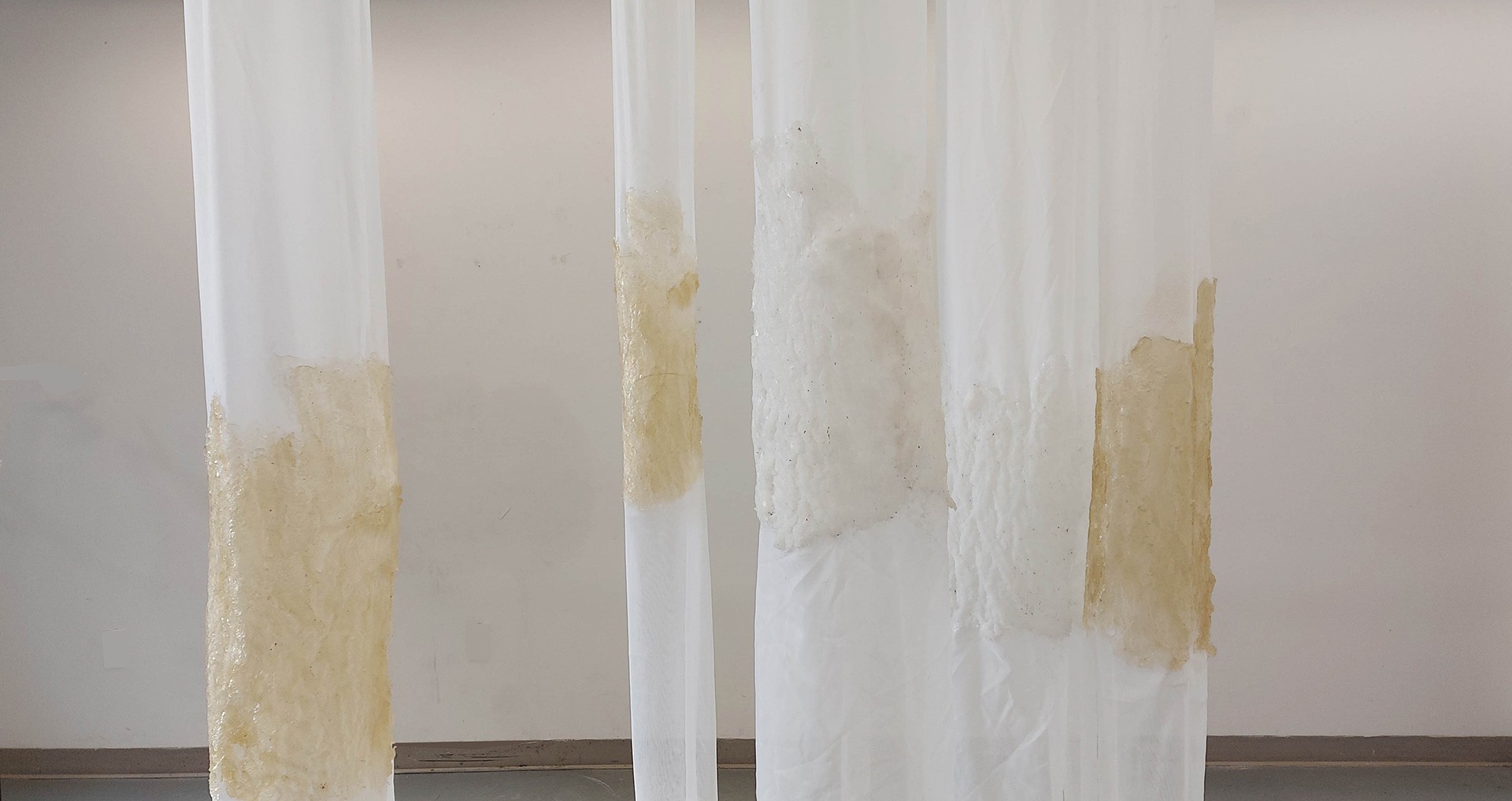 Isabelle Anguita, TRACE DE FORÊT
Isabelle Anguita, TRACE DE FORÊT
Notions around psychological and physiological engagement with organic materials are also present in Isabelle Anguita’s installation Trace de forêt. This work calls upon the nostalgic feelings and gratitude for the forests around us. As an important and delicate part of our world, wooded areas are not accessible to everyone. Anguita’s work thus asks whether these feelings associated with nature can be identified and brought to us. Physical isolation, both from others and from green spaces, is a relatable phenomenon that this work calls the audience to reflect upon.
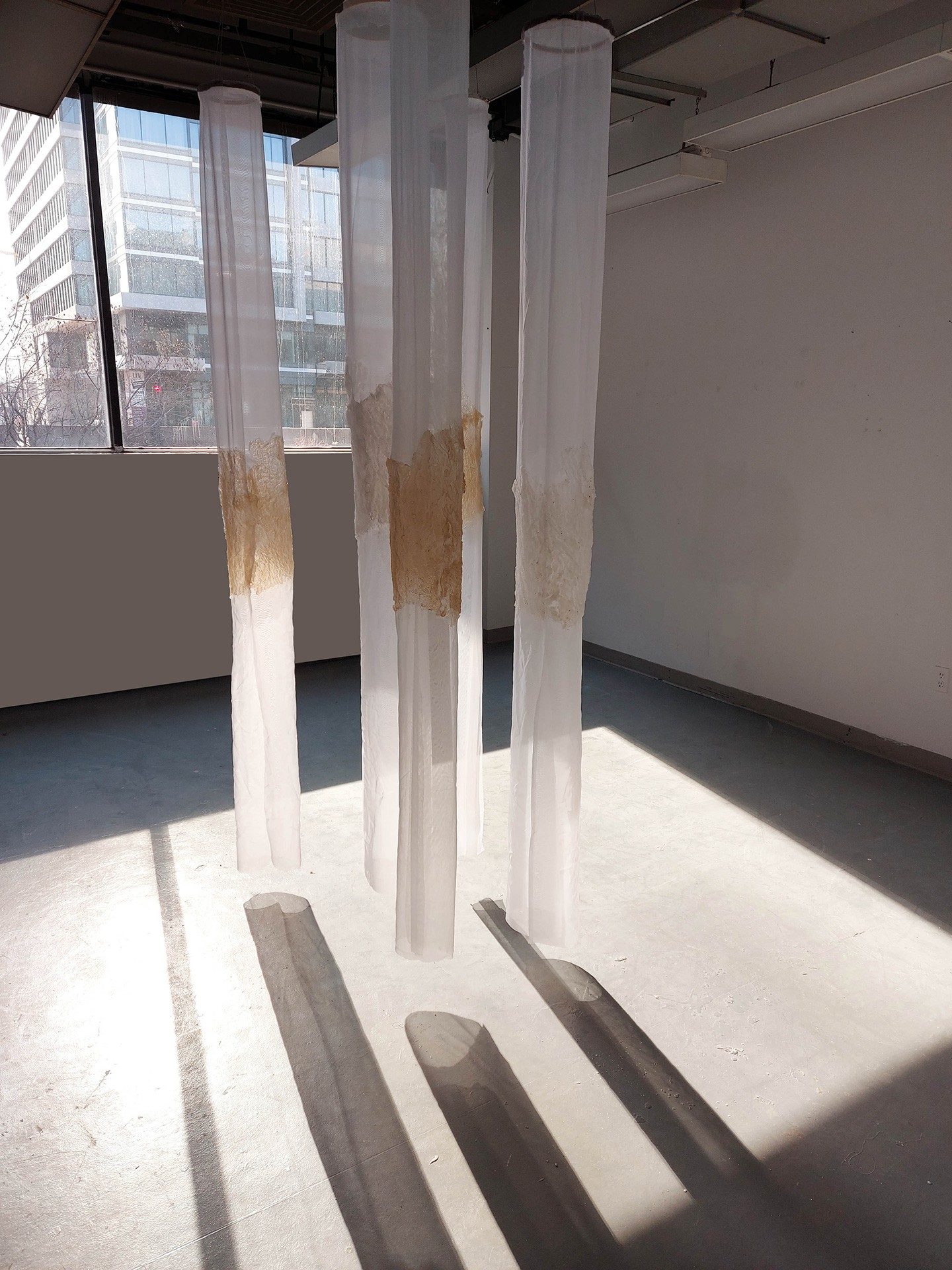
Isabelle Anguita, TRACE DE FORÊT
Suspended at the entrance of the gallery space, the magnitude of Anguita’s seven-foot-high columns materially and spatially convey a series of trees, together working to emulate a walk in the forest. The columns are textured with gelatinous silicone, which gives them an organic quality. The lumpy silicone patches applied onto the mesh fabric mimic the texture of bark, dappled with the uneven reflection of sunrays. This calls to mind the way light may shine down through a canopy of trees. The attention to detail gives these columns an organic look and invites viewers to immerse themselves in Anguita’s fabricated environment. Anguita and Al Mahayni generated spaces that invite the audience to congregate and reflect on how movements are translated into the environments they created and what kind of meanings they carry. The works explored here highlight the importance of bodily experiences, as human corporality does not exist in a vacuum.
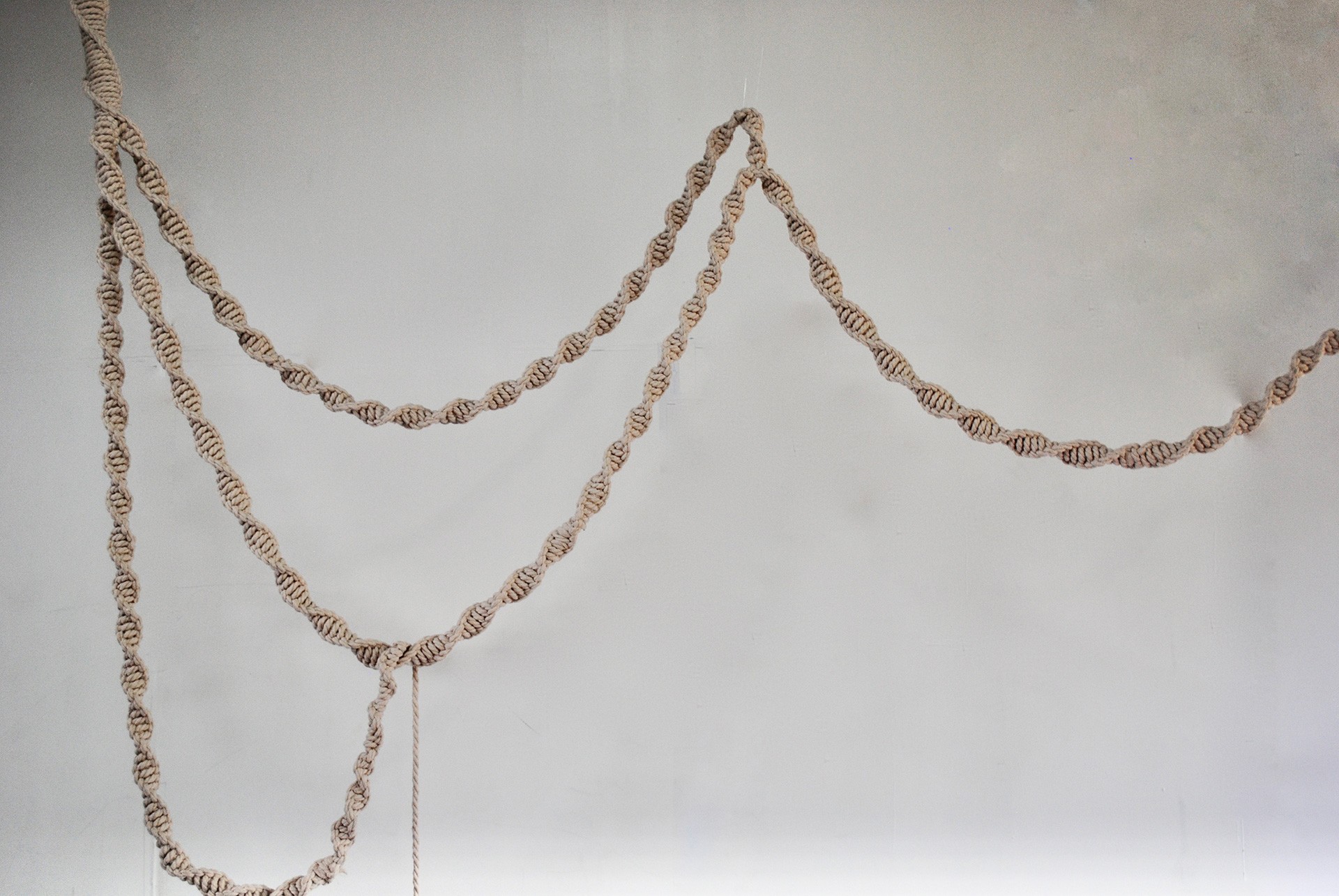 Amara Barner, TO WHOM IT MAY CONCERN
Amara Barner, TO WHOM IT MAY CONCERN
Amara Barner’s poem to whom it may concern, and the installation the interconnected network of everything and anything that accompanies it both encourage us to consider the importance, the beauty, and the strength of the connections we create and maintain with others. Barner’s writing reminds us of how our friends, family, work colleagues, mentors, and our larger intersecting communities are woven into a complex tapestry. In the textile installation in the York Vitrines, Barner uses macramé as a visual and psychic allegory for the paths we take, interweaving with many others, and reveals to us the soft chaos of the connections we establish throughout our lives. This draws on the Rhizome concept, an explanation for the horizontally expanding, subterranean root networks studied in the botanical sciences.2
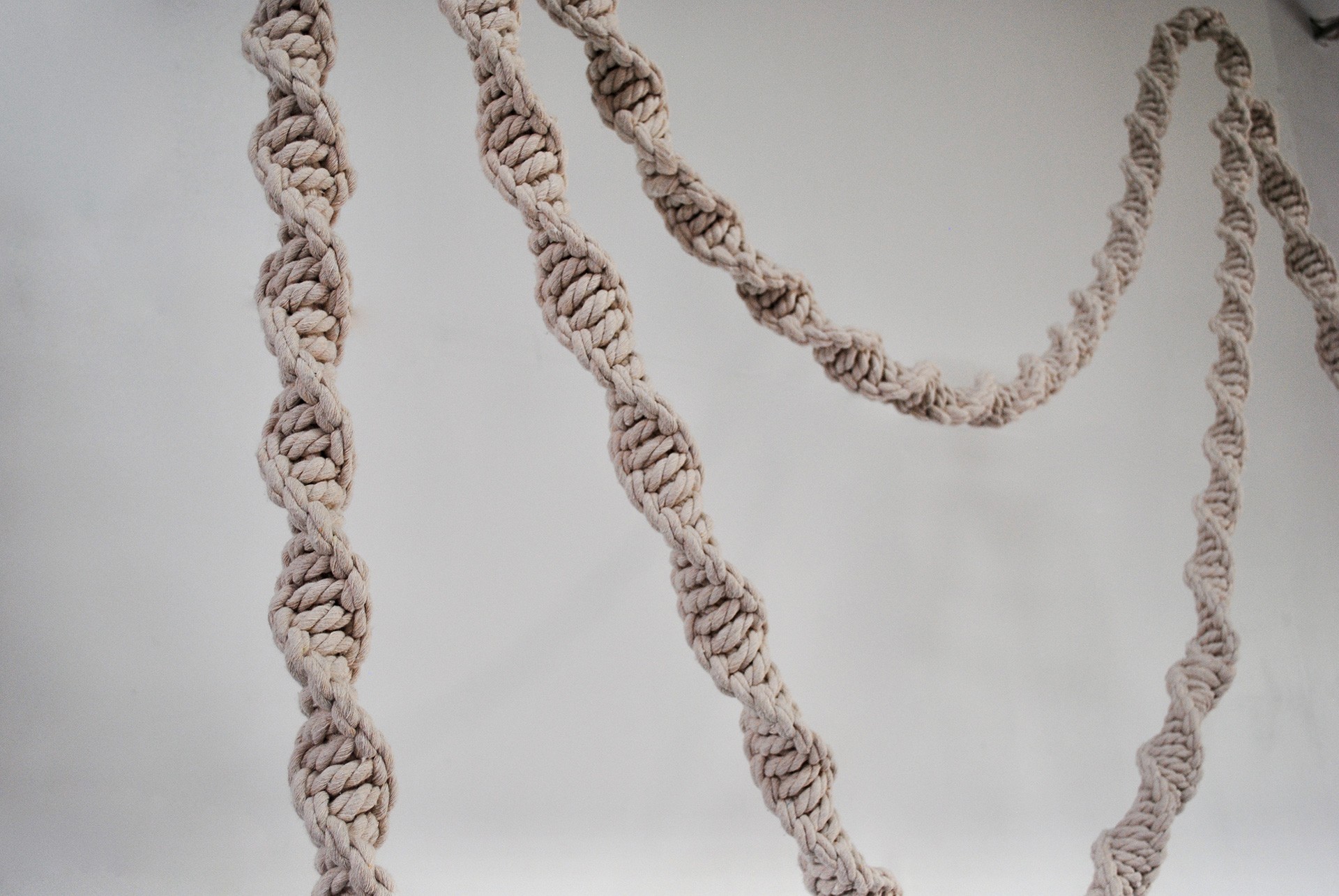 Amara Barner, TO WHOM IT MAY CONCERN
Amara Barner, TO WHOM IT MAY CONCERN
On a conceptual level, the idea of the rhizome points towards a holistic approach to our understanding of society. Barner’s poem calls readers away from individualism and towards a community-based thinking, wherein others are prioritized alongside the self, as part of a larger social structure. Applying the rhizome philosophy to our personal bonds allows us to think about an interconnectedness that is non-hierarchical and has no beginning nor end. By using macramé knots, Barner constructs something that is supple, yet strong. The material wraps around itself, mutually supportive, well-established, and connected. In this way, the viewer is free to project their relational bonds as they visually follow the web of intertwined connections.
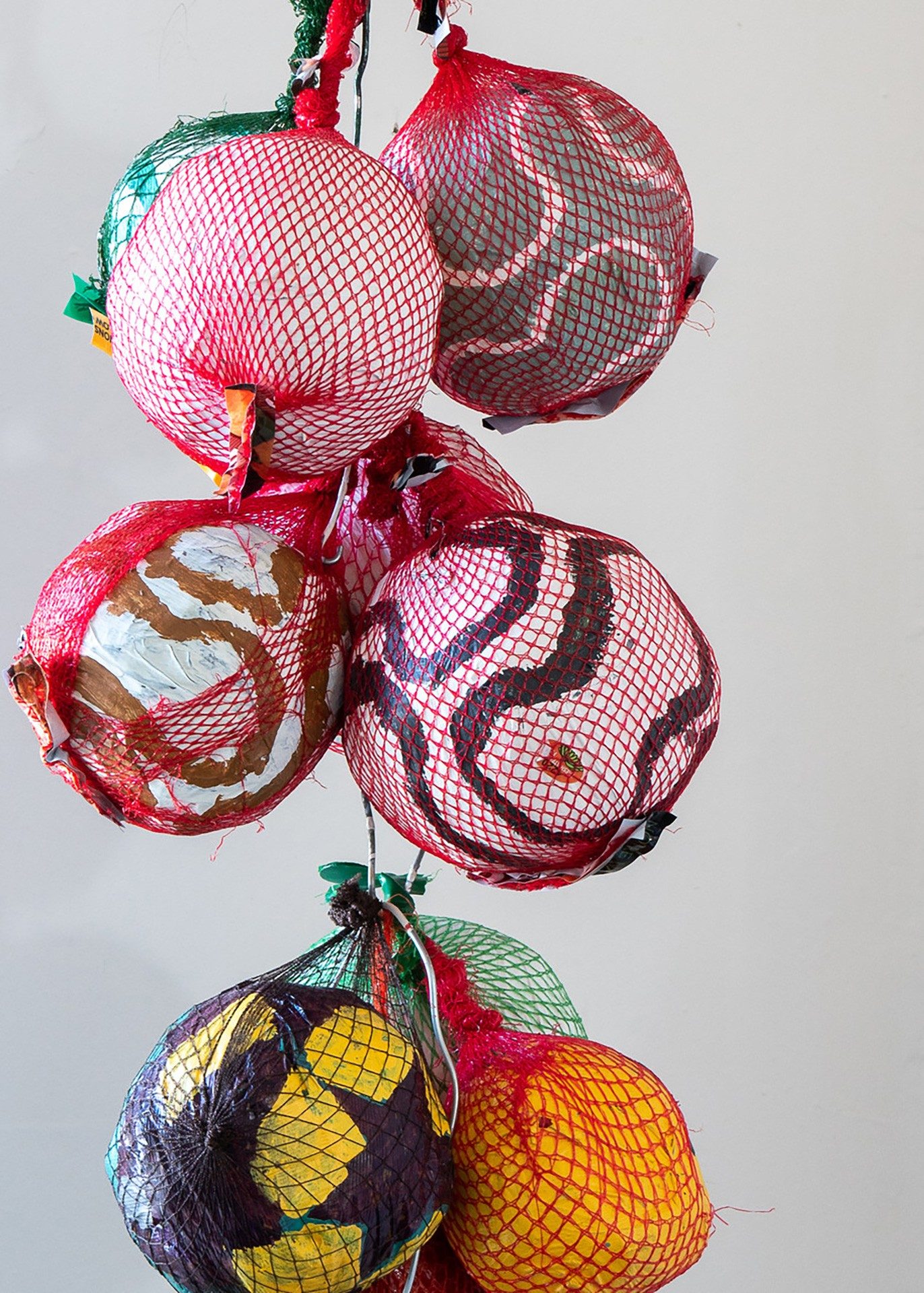
Juan Pablo Hernández Gutiérrez, BOLA E' TRAPO
We are all a part of several communities, but as there are traceable social histories of systemic oppression in our society, many minorities experience inequity, obfuscation, and a lack of representation. For Juan Pablo Hernández Gutiérrez, his artwork bola e' trapo (soccer rag balls) interrogates this specific lack of accessibility within the art world by drawing on the imitative phenomenon of bootlegging as it pertains to soccer. Hernández Gutiérrez locates the resilience and resourcefulness of the Latinx community – sourcing from his own experience as an immigrant from Colombia – by presenting us with cultural symbols of soccer that have been imitated, bootlegged, and thus become more accessible.
With football (soccer) as his starting point, Hernández Gutierrez draws on this sport’s cultural language to implicate the twofold experience of being an immigrant in new contexts. The soccer balls in his installation are crafted using available, inexpensive fabric and emulate the very same techniques commonly used by marginalized communities who create their own balls in order to play. Installed in the York Vitrines are one hundred rag soccer balls made by gluing together thread, scrap cloth, plastic bags, and other discarded materials into a fifteen-to-twenty-three-centimetre diameter ball.
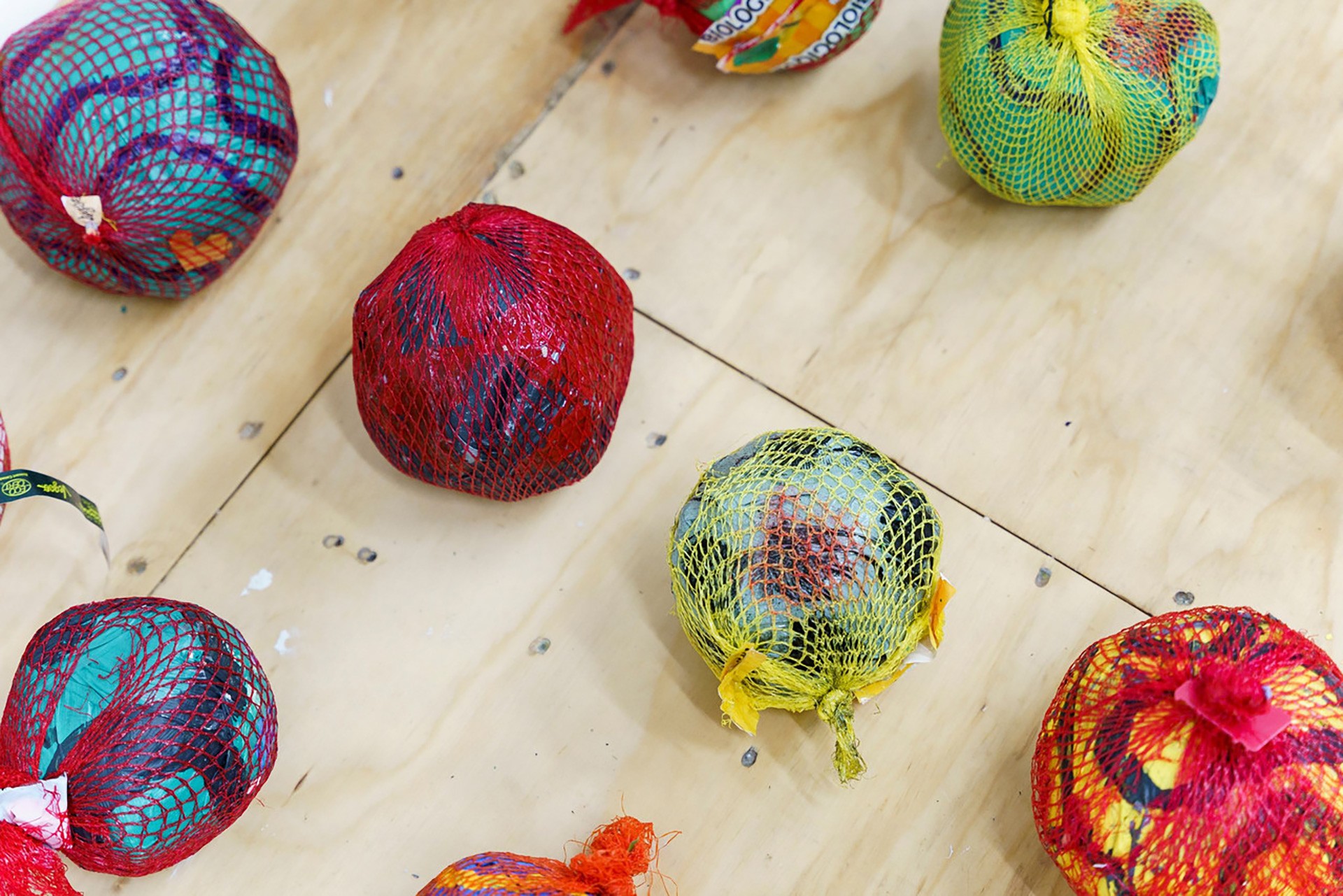 Juan Pablo Hernández Gutiérrez, BOLA E' TRAPO
Juan Pablo Hernández Gutiérrez, BOLA E' TRAPO
By reinjecting the sport aesthetics into a new radically distinct setting, and using cheap and accessible recycled materials, soccer becomes an entry point for considering issues of accessibility in large part because of how popular the game is. But beyond the ubiquity of soccer as a game, the materials Hernández Gutiérrez uses directs our attention to the rapid pace of consumption, how products, brands, and especially their materials, are quickly disposed of.
For Hernández Gutiérrez, these disposable materials are a,
“[…] vehicle of how imported goods come to Canada, and [are] long-lasting disposable proof of an ephemeral, quickly consumed product, much like the experience and tensions that immigrants experience in a new place. After [new immigrants] have served their [socioeconomic] purpose [in the marketplace], [by selling their labour power to the capitalist class], they become an object that only alludes to an ephemeral moment, displaced from their original function, and left to become waste in this new place.”3
By reimagining the utility of materials from these cycles of consumption, Hernández Gutiérrez communicates the ephemeral nature of branded consumer goods.
Ideas of community, humanity, intersubjectivity, and resistance are encouraged by each artist to contemplate the relationships that we forge in our lives, alongside human and non-human species. When we challenge ourselves by communicating ideas artistically, we never act alone. We come into this world vulnerable, dependant on those who take care of us. But we can still consider our vulnerability, our openness to others, as we grow and change. The world we encounter may be full of strife, but an openness to others can turn feelings of despair into hope. Even when against the odds, these artists find strength in connections with others. We can always choose to create, and when we do, we contribute to a shared, intersubjective space.
1 Almany, “Www.almaany.com,” clay - Translation and Meaning in Almaany English Arabic Dictionary, accessed November 18, 2022, https://www.almaany.com/en/dict/ar-en/clay/.
2 Gilles Deleuze and Félix Guattari (A Thousand Plateaus: Capitalism and Schizophrenia. London: Continuum. 2008).
3 Juan Pablo Hernández Gutiérrez, email message to author and in conversation with author, September-October 2022.
About the author
BeNjamyn Upshaw-Ruffner is currently an honours philosophy student with a minor in professional writing at Concordia University in Montreal, Canada. Some of their passions include media literacy, critical theory, and phenomenology.
Upshaw-Ruffner has also been a creative writer for years, gradually honing their artistic craft. They occupied the role of Editor-in-Chief of The Insider at Vanier College and are always looking for new and exciting avenues to share their work. Their poetry and short stories explore themes of ambiguity, identity, and introspection. Their writing has been published in Vanier College's The Insider, Concordia University's The Link, Scribbles Magazine, and Plumose, an online platform for BIPOC stories. As a queer artist of colour, Upshaw-Ruffner champions diversity and inclusion. They are often outspoken about the importance of representation, both within and behind our media landscape.


